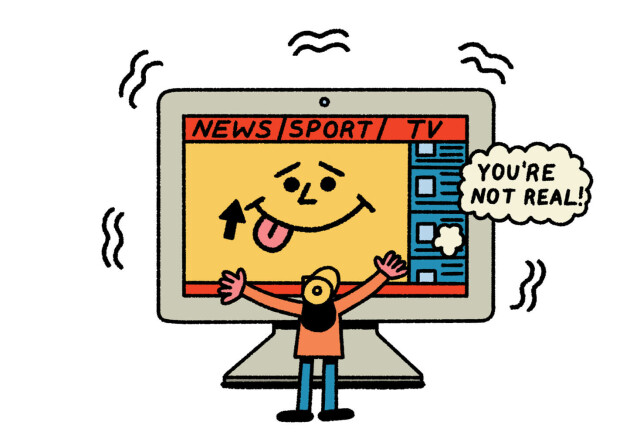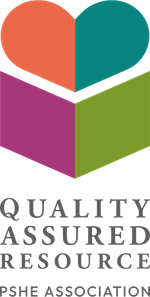NewsWise values
This lesson focuses on the NewsWise value: truthful
Learning objective
To identify fake news and its consequences.
A journalist’s main aim is to report the truth. They need to be good fake news detectives so that they don’t report fake news themselves!

This lesson focuses on the NewsWise value: truthful
To identify fake news and its consequences.
Explain what fake news is and why it is created.
Identify what questions to ask and what checks to make to decide whether a news report is fake or real.
Infer how a fake news story may affect someone’s emotions and behaviour.
Give reasons why fake news can be harmful.
Before teaching this lesson, refer to guidance on creating a safe learning environment for PSHE education, including establishing agreed ground rules for discussion.

Nav’s story: Pupils consider the following character situation: Nav is reading a news story. Nav wants to know whether the story is ‘fake news’. What does Nav mean? If it is fake news, does it matter (why/why not)? What will help Nav decide? What should Nav do about it?
Using the Fake or real headlines pupils vote as to whether each headline is real or fake, making a ‘gut reaction’ decision. (Don’t reveal the answers yet!). What do you think about this story headline? Is it easy to tell if a story is real or fake (especially if we only read it quickly)? Did you have enough information to make an informed decision? How might people react to each of these headlines?
Compare the ‘gut reaction’ process with what happens when people share a funny/shocking story they have heard in conversation/via messaging/on social media before taking time to question if it’s true. Relate this to spreading rumours and gossip in the playground.
Become fake news detectives! Investigate two of these stories in detail by questioning the source and checking the coverage (News story 1 and News story 2). Pupils use the evidence and clues provided to work out which news story is fake and which is real. Pupils can use support materials: Trustworthy news sources and fake news clue words for professional news organisations and fake news vocabulary to look out for in their investigations. What clues helped you to identify the fake news? What clues showed that you could trust the real story?
Pupils read two examples of Fake news stories, inferring how they might make someone feel and what they might motivate someone to do (teacher note: these are not real examples, but have been developed for the purpose of this lesson). How might someone feel reading this story? How does the article try to make the reader feel an extreme emotion? What would happen if someone believed this story? Could it affect how they think or act? How could it affect their actions? What is the motivation of the story/writer? Why has this story been made up? What type of fake news might cause harm?
Where can we get trustworthy news from? As a class create a list of reliable sources where pupils can get real and trustworthy information, including children’s news organisations (eg Newsround). Emphasise the importance of reading across different organisations and sources of information - whether (and how) a story is being reported elsewhere. When searching for a story, include the source that you want the news to come from; eg, football: BBC news. If you are unsure about a story, always talk to a teacher or parent about it first.
Reveal the answers to all the Fake or real headlines stories. If Nav was reading any of the fake stories we have looked at, what should Nav do about it? The Teacher notes give you some more context about each headline, including a link to the original story.
What is fake news?
Why might fake news be harmful?
How do we know if the news we hear, see or read is true?
What can you do if you think a story is fake?
News produced by professional news publications is regulated (has strict rules to follow about fact-checking).
However, sometimes people deliberately make up news where they don’t tell the truth or only tell half of the truth: this is called fake news.
Fake news is created and shared for many reasons: as a joke/an April fool; to generate money through advertising; or to influence people’s beliefs about a person/place/product.
Fake news can have negative consequences because it can make people believe something that isn’t true and can influence how people feel or act. For example, during an election, someone may publish fake news to make people feel angry about a candidate and change the way they vote.
To judge whether a news story is truthful, take time to: stop, question, and check the information so that you can decide whether to believe, share or challenge it. See the News navigator for tips on how to check and question if a story is fake.
As a class, create a fake news detective toolkit for the future or create a guide for other pupils in the school.
Explore how images can be manipulated using the Don’t trust pictures on the internet resource.
Deliver a 'fake or real' news quiz in assembly.
Choose an age-appropriate news story that everyone can investigate. Give pupils their own News navigator to take home to investigate the story with their family.
Pupils create a comic strip/storyboard to demonstrate the fake news reaction chain: reading a fake news story > feeling an extreme emotion > developing a thought-pattern or taking action. Pupils can use the Emotional and action responses resource for support.
Reading comprehension
fact-retrieval, evaluating the reliability of sources, drawing inferences.
Digital literacy
Managing online information
use digital search technologies to find relevant information;
evaluate the validity of information online.
PSHE education
Living in the wider world
recognise ways in which the internet and social media can be used both positively and negatively;
recognise ways in which the internet and social media can be used both positively and negatively;
how to assess the reliability of sources of information online and how to make safe, reliable choices from search results;
recognise things appropriate to share and things that should not be shared on social media;
how text and images in the media and on social media can be manipulated or invented;
strategies to evaluate the reliability of sources and identify misinformation